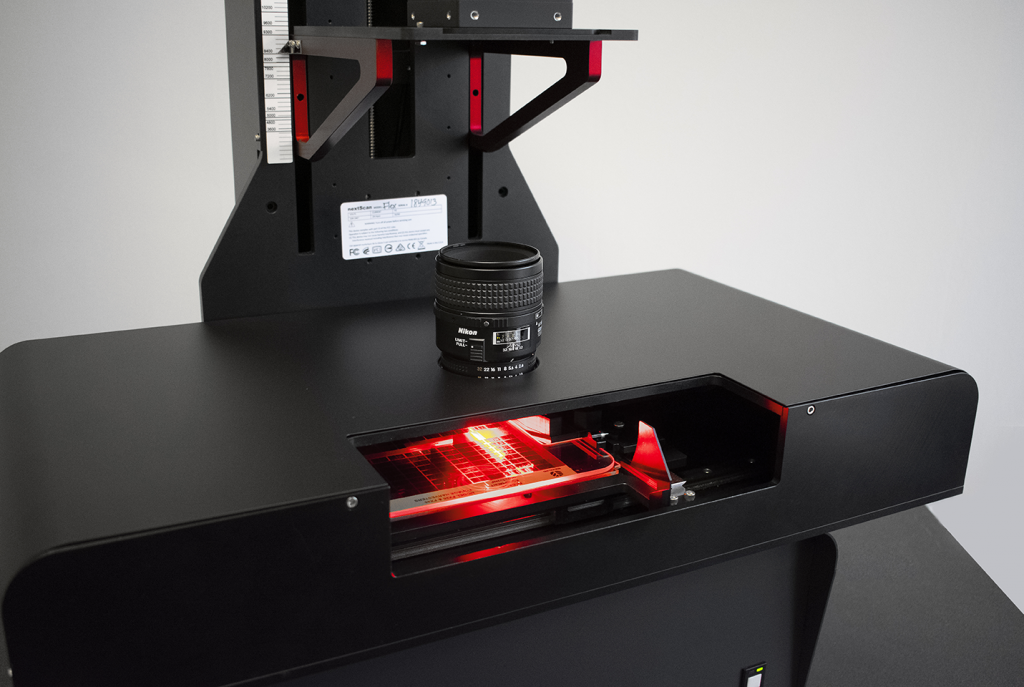Overcome Microfiche Challenges

Published Inside NIRMA Magazine Summer Edition 2021
By Matt Anderson, VP of Sales & Marketing – nextScan & ST Imaging
While fiche is an excellent medium for long term storage of documents and files, retrieving the contained information can be challenging. Beyond the difficult nature of the medium, the three unique challenges microfiche presents include the condition of the microfiche, how the documents were filmed onto the microfiche, and how the files should be sorted. In addition, conversion should provide assurance that all the information was captured. nextScan approaches these challenges head-on delivering the fastest and smoothest microfiche conversion solution.
Is All Microfiche Flat?
Since microfiche is a flat sheet, it is very stackable and made for simple storage. In perfect condition, a stack of microfiche should be able to be loaded and scanned automatically. We have experienced instances that a group of microfiche will be combined, with a paperclip or with a rubber band, to keep them together. Over months, years, and possibly decades, the tightness of being held together will warp the microfiche. Now, instead of neat, flat pieces of microfiche, you have microfiche that may curve from the middle to the edges or be wrinkled in some areas. This may require individual attention and is not ideal for a quick conversion project.
Imperfections with fiche must be addressed before being able to properly convert the microfiche to a digital format. To keep microfiche in place, it is placed between two pieces of glass. One effective solution that nextScan employs is to use a heavy piece of glass to hold the microfiche in place. This will ensure the media is as flat as possible as it is being scanned. When converting, make sure your scanner can handle the condition of your microfiche.
Microfiche Irregularities
Microfiche created today uses a machine called an archive writer. This machine essentially takes a picture of an open digital file and records it onto the piece of exposed film. The microfiche is then processed using chemicals to create the visible image on the film. With so many variables, if one is not performed properly there is a chance the produced images could be in poor quality. Special high-definition scanners will be required to bring the lost information back to life.
Another issue a microfiche user may experience is if the files were not filmed straight, or the images are skewed on the microfiche. This happens when the microfilmer does not line up the documents correctly. nextScan’s software automatically recognizes the image as being crooked and automatically straightens the image.
Microfilm Archive Orderliness
One aspect often overlooked in microfilm conversion process is refiling the documents to their original position in the archive. Many times, these files are in sequential order or filed by date. nextScan’s autoloader on the FlexScan has been designed to hold hundreds of microfiche, automatically move the microfiche to the scanning area, scan the entire document, and move the microfiche to a holding tray. Not only does this recreate the same stack of microfiche from where it started, but it also frees up the operator for other tasks.
Line Scanning Technology
Finally, the only suitable way to guarantee a 100% capture rate is with a line scanner used in all nextScan equipment. Cameras and imaging systems utilize different techniques and components for capturing images. Two common methods for capture are line scan and area scan. Line scanning technology is best applied to large, high-resolution and/or high-speed capture, such as high-speed microfiche conversion. This technology allows for movement of the media during the continuous capture process, guaranteeing a full digital copy. Comparatively, the area scan method relies on the software to determine each frame, move to position, stop to capture, and find the next frame. Not only is that a longer process, but it does not guarantee full capture of the microfiche.
Your archives hold some of the most important documents. Many may have been there for decades. Make sure to use a system designed to meet the challenges of scanning microfiche. Whether the media is flat, curved, skewed, straight, ordered or not, your scanner should create an exact digital replica of your documents. Don’t leave your conversion project to chance.
nextScan manufactures a wide range of scanners designed for the high-speed conversion of both microfilm, microfiche, and aperture cards. For more information on our microfilm conversion scanners, call us at 208-514-4000 or email us at sales@nextScan.com.

